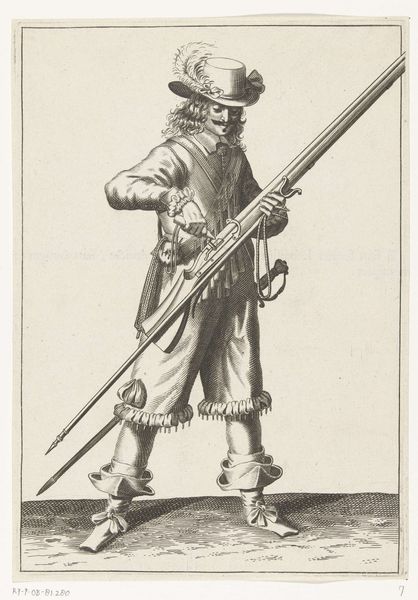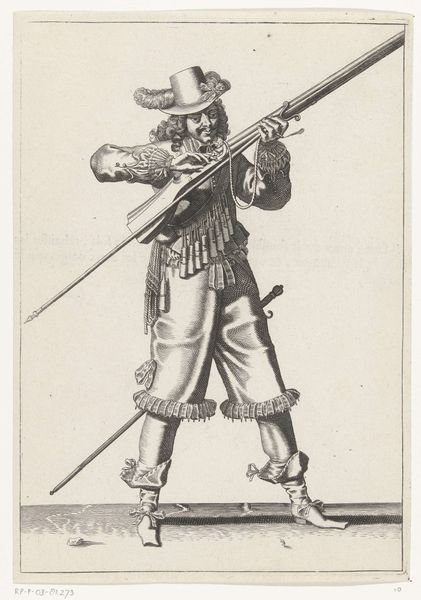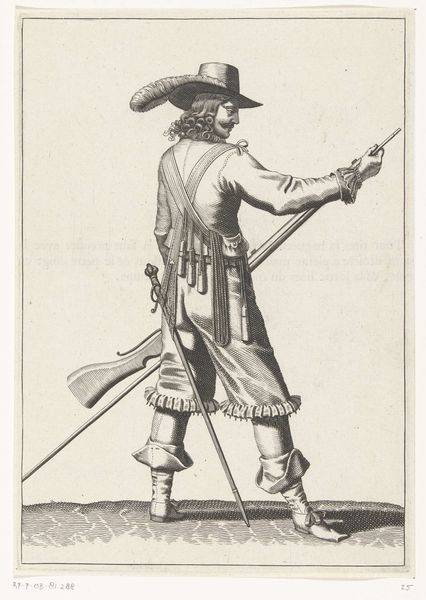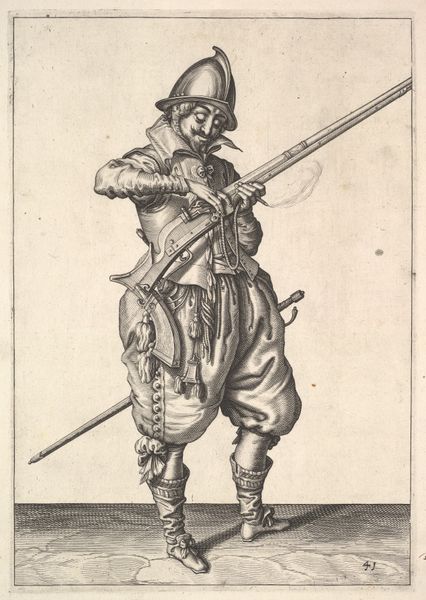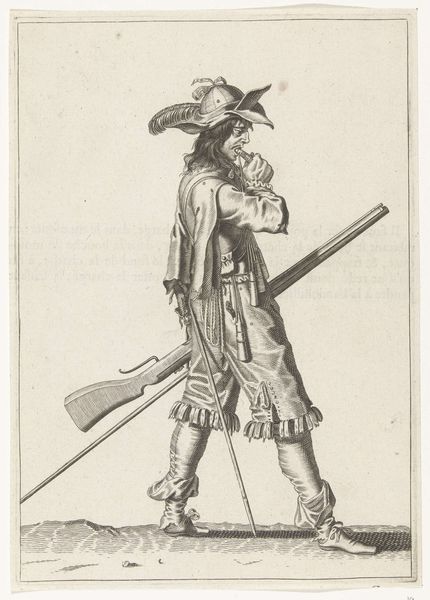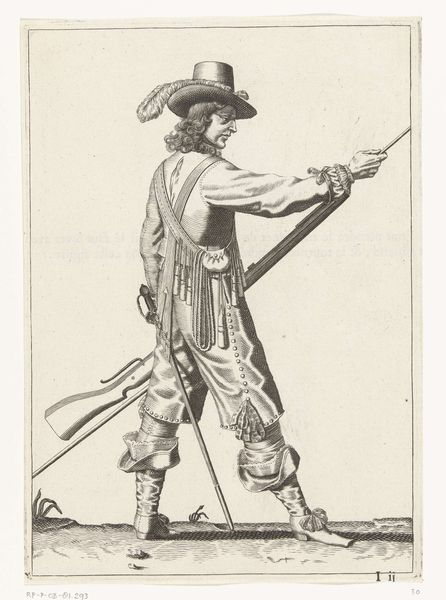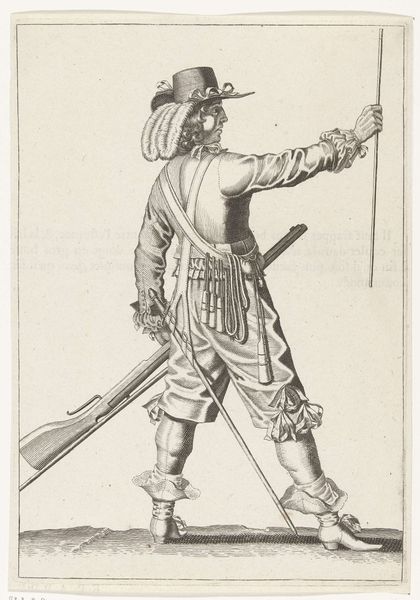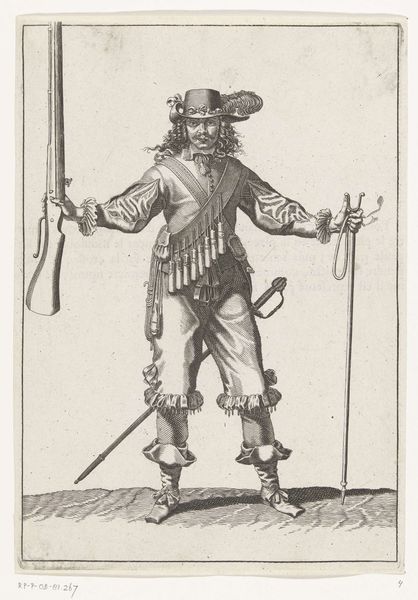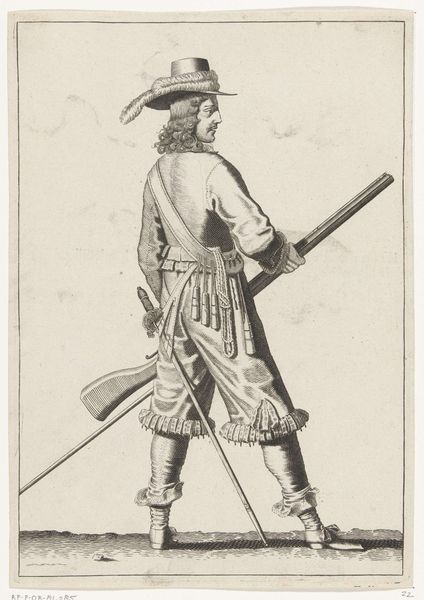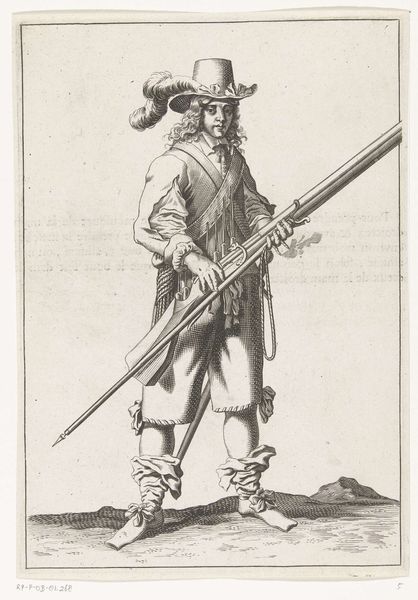
Soldaat die de lont op de haan van zijn musket de juiste plek en vorm geeft, ca. 1645 1645 - 1647
0:00
0:00
engraving
#
portrait
#
weapon
#
baroque
#
caricature
#
genre-painting
#
engraving
Dimensions: height 235 mm, width 165 mm
Copyright: Rijks Museum: Open Domain
Petrus Rucholle's engraving from around 1645 shows a soldier meticulously preparing his musket, a weapon symbolizing power and precision. But it’s the soldier's focused gaze that really strikes me. Throughout art history, the act of preparation, whether for battle or ritual, carries immense weight. Think of Renaissance depictions of David preparing to face Goliath; the intensity of focus mirrors this soldier's intent. The musket itself, a relatively new technology at the time, represents a shift in warfare. The flame is a symbol of transformation. One can trace the flame motif back to ancient depictions of Prometheus stealing fire from the gods, or even earlier. In that context it symbolized enlightenment, an instrument for potential, and one of destruction when handled improperly. This echoes in our soldier's careful preparation – the potential for creation and destruction rests in his hands. We see how symbols and gestures transcend time, perpetually shaping the narrative of human experience.
Comments
No comments
Be the first to comment and join the conversation on the ultimate creative platform.
